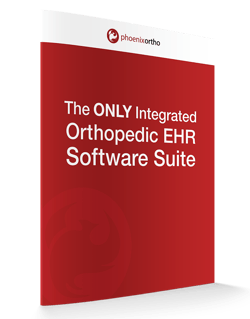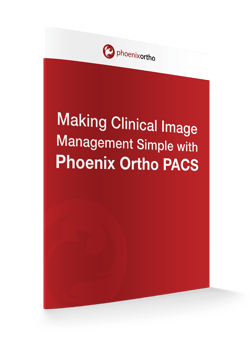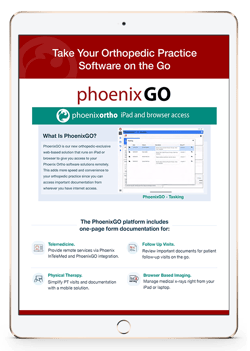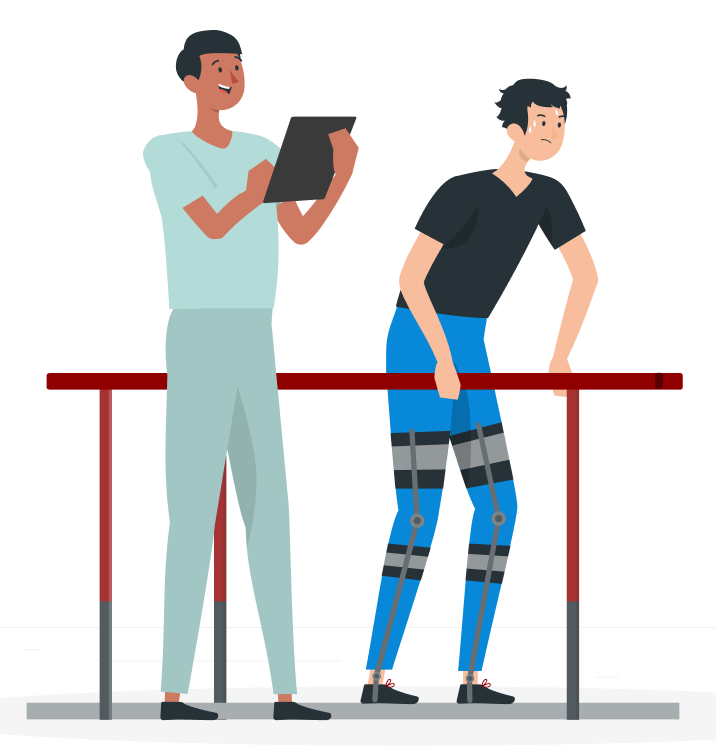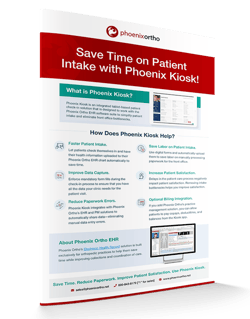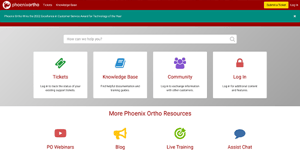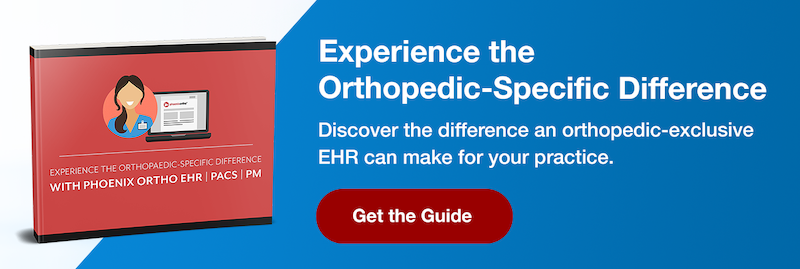Software has become an inseparable part of modern orthopedic practice. To help streamline traditional clinical workflows, improve patient data capture, save time on data entry tasks, improve collections at the point of care—there are many reasons to use modern technology aside from the occasional government mandate.
However, juggling a bunch of different software programs from a half-dozen different vendors can often cause just as many delays and headaches as they would normally save your practice.
In this post, we’ll discuss some of the more popular software programs used by orthopedic clinics, the challenges of juggling different software from different vendors, and how using a single, all-inclusive vendor can help you save time, labor, and headaches.
Popular Software Orthopedic Clinics Use
There are a ton of different software applications that a clinic might need or want to use. Whether the clinic needs to meet government guidelines, save time on specific processes, or remove the risk of data entry errors from common tasks, there’s a software solution for practically everything.
Here’s a list of some commonly-used types of software that an orthopedic clinic might use:
- Electronic Health Records (EHR) Software. A type of patient charting solution that gives clinic staff easy access to digital patient records. Often a central part of patient data management in any practice—and frequently paired with other solutions to share data.
- Practice Management (PM) Software. A category of software that covers many of the business aspects of running an orthopedic clinic—such as appointment scheduling, verifying eligibility, managing claims, processing payments, etc.
- Picture Archiving and Communications Systems (PACS). Software that helps clinics manage their medical images from ordering to storage and transmission. Often important for providing orthopedists with the x-rays and other medical images they need when consulting patients.
- Patient Intake Software. Patient-facing software that allows patients to enter their data electronically at check-in. Can often help streamline patient intake processes and minimize the risk of data entry errors from manually copying patient information into the patient chart.
- Telemedicine Applications. Software programs and smartphone apps that allow orthopedic doctors to perform “remote visits” with patients. These apps help eliminate geographical barriers to seeking orthopedic care and help doctors increase their effective service area.
- Prescription Management Software. Solutions for tracking patient prescriptions, writing new prescriptions, checking drug and health histories, and reviewing for potentially harmful drug interactions.
- Durable Medical Equipment (DME) Software. Software that helps track the orthopedic clinic’s inventory of durable equipment (such as wheelchairs, walkers, crutches, etc.). Some DME solutions let users set reminders to order more DME items when supplies hit certain levels to prevent inventory shortages.
These are just a few, high-level explanations of some of the more prevalent types of software used by orthopedic practices. However, even within these few software types, a clinic might end up using half a dozen different vendors to get access to all of the software they want! Worse yet, orthopedic clinics may feel forced to use software that is meant for primary care facilities. This can lead to interface bloat as users have to sift through endless extra menus and options not meant for orthopedics.
3 Reasons to Simplify Your Ortho Software Solutions with a Single Vendor
Why is working with multiple software vendors such a pain for orthopedic clinics—especially when those vendors don’t normally work together? There are a number of reasons to simplify your orthopedic software solutions by using a single vendor (or a vendor with dedicated long-term partnerships) who can combine multiple software programs under a unified platform, such as:
1. Eliminating Barriers to Sharing Data between Software Apps
One of the biggest problems with using multiple programs from different vendors is that they don’t always have compatible file formats that make sharing data between them easy. For example, if the EHR uses one file system, but the PACS solution uses a different one, then the EHR won’t be able to pull the images ordered on demand.
Using an interface designed by either party doesn’t provide a permanent solution, either. This forced interface may not run stably, may encounter problems when one program or the other runs an update, or may simply fail when the vendor who created it stops supporting it. Worse, at every step of the way, both vendors will often just point at each other and say: “it’s not my fault, it’s theirs!” without taking responsibility or working to fix the problem.
By using a unified platform of software programs from a single vendor, compatibility issues can be eliminated completely—removing the need to make custom interfaces just to enable basic functionality.
2. Simplifying Payments for Orthopedic Software
Paying bills is a necessity for any clinic. However, paying multiple vendors can turn what should be a relatively straightforward process into a major headache. When using software programs from a half-dozen separate vendors, that’s a half-dozen different payment due dates and payment amounts to keep track of.
In a clinic with a lean operating budget, having to watch out for any large expenses coming out of the budget can be stress-inducing—to say the least. Tracking several dates each month for varying software costs can be a major headache.
By unifying your orthopedic software under a single platform, you can simplify tracking when payments are due (and how much the software costs). This, in turn, helps minimize the risk of missing a payment or forgetting about an automated payment due date and over-drafting the expense account.
3. Increasing Accountability from the Vendor
As mentioned earlier, one of the problems with using multiple vendors who aren’t close partners for different pieces of software is that, when their programs don’t work together, the two vendors will often spend more time pointing the blame at the other than they will trying to find a fix. Also, because of how incredibly complicated software programming can be, bugs are almost inevitable.
Complaints like “Vendor A changed the location of their executable file” or “Vendor B isn’t bothering to check for compatibility issues” can end up being more common than “We knew this change was going to be made, so we were sure to prepare for it.”
When it comes to adding hotfixes to keep your software platform working at peak efficiency, do you want to hear excuses, or do you want results? Odds are that you want results and solutions. By using a single vendor with dedicated partners who they regularly work with, you know exactly who to hold accountable and that the vendor knows all the interactions and aspects of their individual products well enough to quickly find the problem and create a fix.
How Phoenix Ortho Can Be Your All-Inclusive Vendor for Orthopedic Software
In short, using a single software vendor for all of your orthopedic software helps reduce the risk of compatibility issues, simplifies billing, and increases accountability so you can save time on managing software. After all, in an orthopedic practice, your focus should be on seeing patients and growing revenue, not wasting time corralling different software vendors!
Phoenix Ortho provides a comprehensive suite of orthopedic software solutions to your practice—all under a single vendor. This includes EHR, PM, PACS, telemedicine, mobile prescription management, patient intake, DME, and even fax management solutions.
Why split your costs and attention between a dozen different software vendors when you can get software made exclusively for orthopedics from a single vendor? Reach out to Phoenix Ortho now for an all-inclusive orthopedic software solution to revolutionize your practice now!
Schedule a 1:1
Get in touch with Phoenix Ortho to learn more about how you can save time, money, and mouse clicks with an orthopedic-specific EHR.





